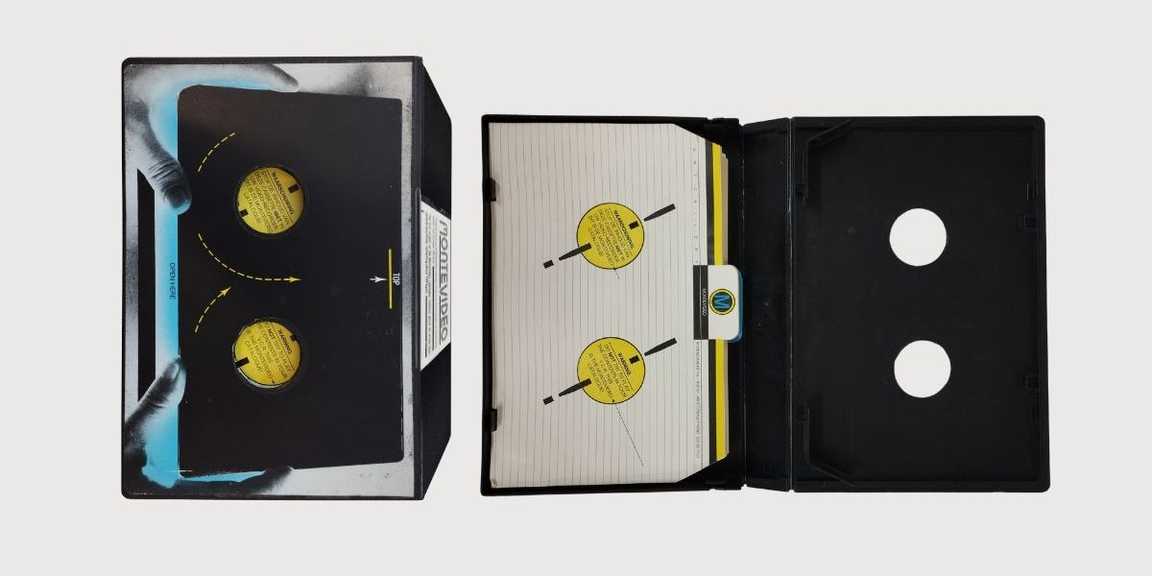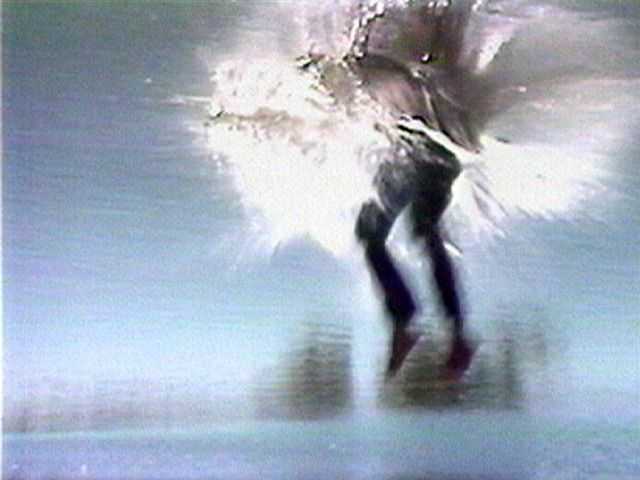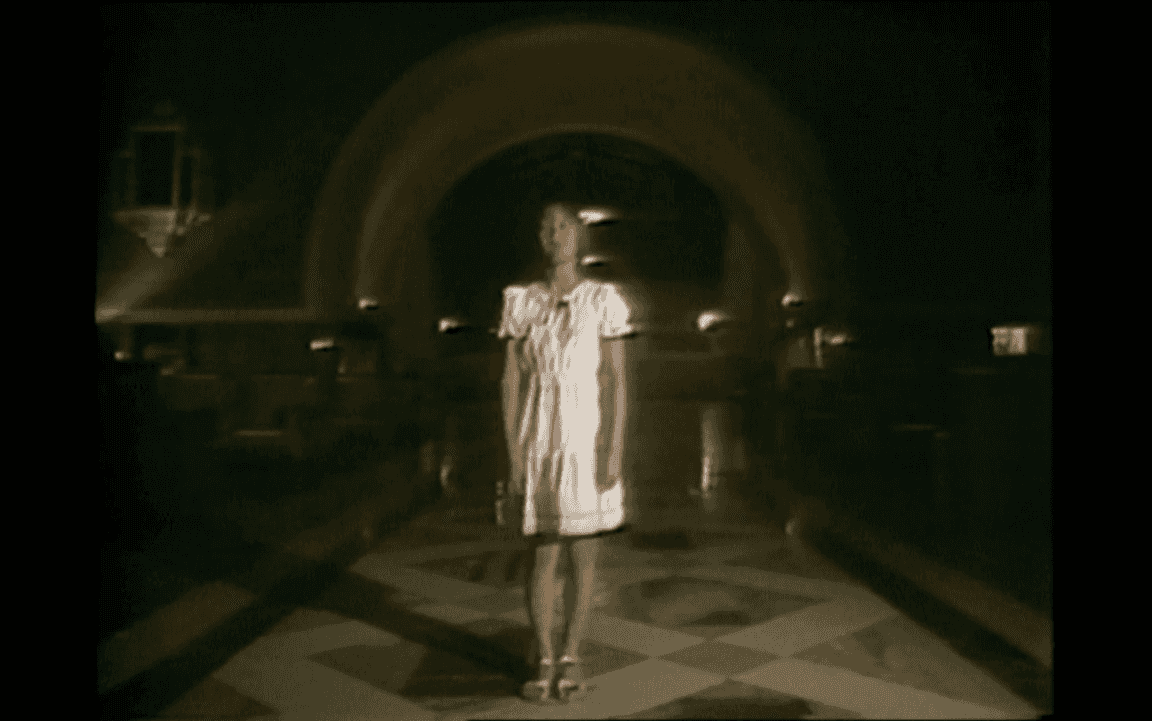
Philosophy Rendered Through Tape: Bill Viola, René Coelho and MonteVideo’s Early Years
Revisiting Bill Viola and René Coelho’s early video art dialogue through rare MonteVideo archival tapes
LI-MA proudly stewards the legacy of Montevideo/TBA and the Netherlands Media Art Institute (NIMk), preserving their archives, collections, and documentation from 1978 to the present. Through ongoing research and reflection, we continue to trace the roots of media art in the Netherlands and beyond. In this article, LI-MA’s research intern Liza Kolomiiets revisits 1984 through rare archival tapes housed in the Montevideo archive, uncovering a formative exchange between two pioneers: Bill Viola and René Coelho.
Early Conversations and Insights
What brought American video artist Bill Viola and Dutch media art pioneer René Coelho[1] together? As LI-MA continues diving into the MonteVideo archives, their encounters resurface – offering a glimpse into the early works, shared dialogues, and the formative moments that shaped both artists and the field of video art itself.
"First and foremost, I am an artist; there is no choice, so if not this medium, then something else," said Bill Viola to René Coelho during a 1984 interview. When the medium was still defining its boundaries and ambitions, Viola and Coelho both observed the high potential of video as an art medium early on. Sitting on the porch of a house somewhere in America, the two important figures in media art from different sides of the Atlantic Ocean discussed Viola's work and shared their perspectives on the trajectory of a then-nascent form of art.
MonteVideo Thursday Evening Screenings
The relationship between Bill Viola and René Coelho began a year prior, when the latter invited Viola to the then recently established Thursday Screenings. Taking place at the Mazzo club, located at Rozengracht 114 in Amsterdam, the bi-weekly event attracted a diverse range of visitors – from individuals passionate about art to artists and curators, all seeking a creative common ground. In a dimly lit but spacious room filled with television sets and chairs, people gathered to watch tapes, socialise, and get inspired by the works of both Dutch and international artists.
These works were not specifically created for the screenings, but were selected by René Coelho either according to a theme, were part of the Nederlandse Videocircuit[2], or came from the MonteVideo collection. Amidst this evolving scene, Viola accepted Coelho's invitation to MonteVideo and presented three of his works: Silent Life (1979), Ancient of Days (1981), and Hatsu Yume (1981)[3].
"For me, often the images arise from the sound, as the sound is more important or even becomes the base for the image," Viola said, referencing his works Anthem (1983) and Hatsu Yume. Created during a residency at Sony Corporation's research labs in Japan, Hatsu Yume indeed starts not with an image, but with sound: a low, immersive rumble that anchors its meditative pace.
Set against images of Japanese sunsets, bamboo forests, and fish markets, Hatsu Yume evokes deep emotional undercurrents through the combination of symbolism and sound. Using viscous, ultra-slow-motion editing, the work draws the viewer into a sensory experience of life and death, where meaning unfolds through the duration and an unsettlingly hypnotic experience.

Bill Viola, Ancient of Days, 1981, 12'21". In collection: Stedelijk Museum Amsterdam
Sound, Symbolism, and Structure
In the same interview with Coelho, Viola described how, in early works, he realised he could structure his videos by moving and positioning the camera based not on visual logic, but on acoustics. For him, the work stemmed from working with video as a material. Together with sound and image techniques, the result is a media work where images stretch and breathe according to an internal rhythm determined by the echoes from within the frame.
This method also carries through in Ancient of Days, a piece that blends biblical symbolism with the structural rigour of a Bach fugue. Viola layers independent visual lines that interact in harmony, creating a visual and sonic structure that collapses linear time into a cyclical loop. While depicting people dissolving into backdrops, clouds melting, and time folding in on itself, Viola carefully studied the behaviour of sound in space and showed that everything was the result of careful structuring rather than solely intuitive experimentation.
Where Ancient of Days offered spiritual structure and Hatsu Yume a meditative pace, Silent Life turned its gaze to the most corporeal threshold: birth. Shot in a New York hospital, the work documents new-borns in their earliest hours of life. Unlike the other two works, Silent Life avoids temporal manipulation, instead echoing the cyclical rhythm and waves of life. The camera simply recorded the liminal space, yet the emotional intensity was no less striking. Cold nursery hues and the constant backdrop of crying isolated the babies from maternal warmth. Through close-ups of silent tears and wailing grimaces, Viola reawakened a near-universal memory: a visceral, unspoken, and deeply buried primal recognition. Silent Life reawakens what he saw as a primal memory, an emotional experience long buried in the body and mind.
However, of all Viola's works from that period, none embodied the visceral power of sound more profoundly than Anthem, which appeared at the MonteVideo Thursday Screenings in 1986. In this haunting piece, a young girl stands in a vaulted, cathedral-like space as her scream, slowed to an almost geological tempo, becomes the film's central thread. Imposing the duration of the images, each shot arrives with a sharp intent. Viola overlays the multiplied image of the girl with a stream of dissonant visuals of urban desolation, surgical incisions, and beach crowds, creating a seer's chant and a spiritual intervention.
Being very impressed by the work, Coelho confessed that he had seen Anthem three times. To him, Anthem was a kind of philosophy made visible, rendered through tape. Responding to Coelho’s comment, Viola explained that the viewer should become attuned to the rhythm of the image: "You feel in tune as the basis is the human physiological system, perception, and attention."
Art vs. Television
This plexus of perception and form became a guiding theme in their entire conversation, later on shifting to a discussion about the medium's growing proximity to television. Viola voiced his concerns about the increasing tendency of video art to imitate television, noting that "there is a strong move to work on television's terms, and not the artist's." Too often, he felt, artists adapted their vision to fit the medium's conventions, producing work that mimicked television rather than challenging it. "What a lot of artists do not reveal is a lot of new information," he declared.
Still, Viola did not reject television outright. He acknowledged that, like a chameleon, there is also a certain value in adapting: "By taking on a form and dealing with variations, it has potential." Nevertheless, he was wary of the compromises that came with it. "It is a great temptation," he reflected, "just like painting the king in a flattering way, or pleasing a wealthy gallery owner."
Emphasising a key distinction, Coelho shared this alertness: "TV is designed to switch your brain off after a hard day's work. Art should switch it on." For both Coelho and Viola, media art was about purpose, and not just about aesthetics or style. Both the media artist and MonteVideo founder believed that artistic vision was something to be followed, and not something to be tailored for global trends or market pressures.
In retrospect, the Thursday Evening Screenings at MonteVideo were more than just a creative gathering or a curatorial initiative. Soon after the launching, these screenings became a crucible for opening and sustaining dialogue, experimentation, and manifestation of artistic vision. Bill Viola's presence and his lasting relationship with René Coelho epitomise what made the space so vital: resistance, curiosity, and radical openness. Whether through the dreamlike layering of Hatsu Yume or Anthem, the structural fugue of Ancient of Days, or the raw intimacy of Silent Life, Viola's early work invited viewers to slow down, listen, and immerse themselves in a shared human rhythm.
In resisting the pull of television's pace and spectacle, these works embraced stillness, introspection, and the whole arc of being: birth, beauty, decay, and disappearance. MonteVideo, in turn, offered the rare space where such vulnerable and radical gestures of art multiplied, like waves. These waves and their traces still resonate today. With the ensured care and archival stewardship efforts of LI-MA, these pioneering works remain visible, accessible, and preserved for future generations of viewers and researchers.

Bill Viola, Anthem, 1983, 11'30".
Notes
[1] René Coelho, founder of MonteVideo (1978) in Amsterdam – which later restructured and became LI-MA – was a key figure in shaping the early Dutch media art landscape.
[2] The Nederlands Videocircuit was one of the initiatives that helped to increase visibility of videoart in the Netherlands. By allowing videotapes to circulate between art institutions all around the country, this initiative was important to later on establish bigger collections such as The Netherlands Media Art Institute, which eventually became LI-MA.
[3] From Japanese, Hatsu Yume translates to First Dream, and refers to a Japanese tradition where the year's first dream predicts the future.
Header image: MonteVideo’s first catalogue from 1982. Design Swip Stolk.






